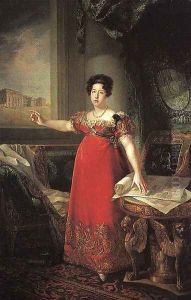Bernardo Lopez Paintings
Bernardo López Piquer, often known just as Bernardo López, was a distinguished Spanish painter born in 1778 in Valencia, Spain. He was a prominent figure in the Spanish art scene of the late 18th and early 19th centuries. His life and work bridged the gap between the late Rococo and the burgeoning Romanticism movement, reflecting the turbulent times in which he lived.
Bernardo López's artistic journey began under the tutelage of his father, the painter Francisco López. This early education grounded him in the basics of art and painting, which was further enriched by his studies at the Real Academia de Bellas Artes de San Carlos in Valencia. His talent and dedication to his craft were evident early on, and he quickly gained recognition for his skill, particularly in portraiture.
In 1802, López moved to Madrid, a move that marked the beginning of a significant phase in his career. Madrid's vibrant artistic scene offered him new opportunities and challenges. He became a court painter to Ferdinand VII and was also appointed as a member of the Royal Academy of Fine Arts of San Fernando. His position allowed him to secure several prestigious commissions, and he became renowned for his portraits, which captured the elegance and subtlety of the Spanish nobility and bourgeoisie. His works from this period are characterized by their meticulous detail, vibrant colors, and the psychological depth of the subjects.
Despite his success, López's life was not without its challenges. The political turmoil in Spain, particularly the Peninsular War (1808-1814) and the subsequent upheaval, affected his career and the patronage he received. However, he adapted to the changing times, and his work evolved to reflect the Romantic sensibilities of the era, moving away from the strictures of his earlier neoclassical training.
Bernardo López's contributions to Spanish art were not limited to his paintings. He was also involved in the artistic education in Spain, teaching at the Royal Academy of Fine Arts of San Fernando, where he influenced a new generation of artists. His legacy is seen in the continuation of his portrait style and in the evolution of Spanish Romanticism.
Bernardo López Piquer passed away in 1850 in Madrid. Today, his works are celebrated for their artistic merit and historical significance. They are housed in various museums and collections, serving as a testament to his skill and the pivotal role he played in the transition from Neoclassicism to Romanticism in Spanish art.
